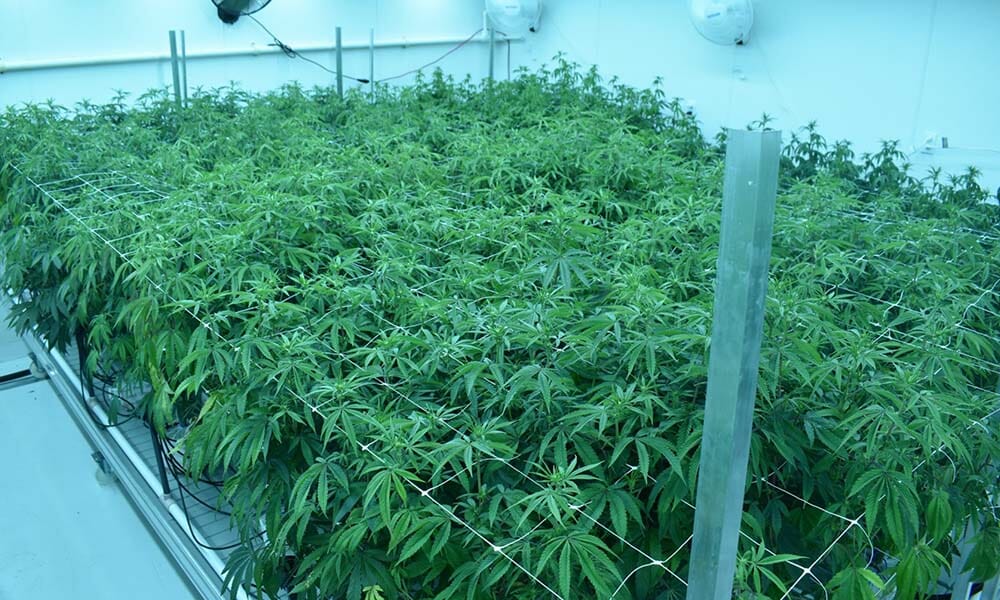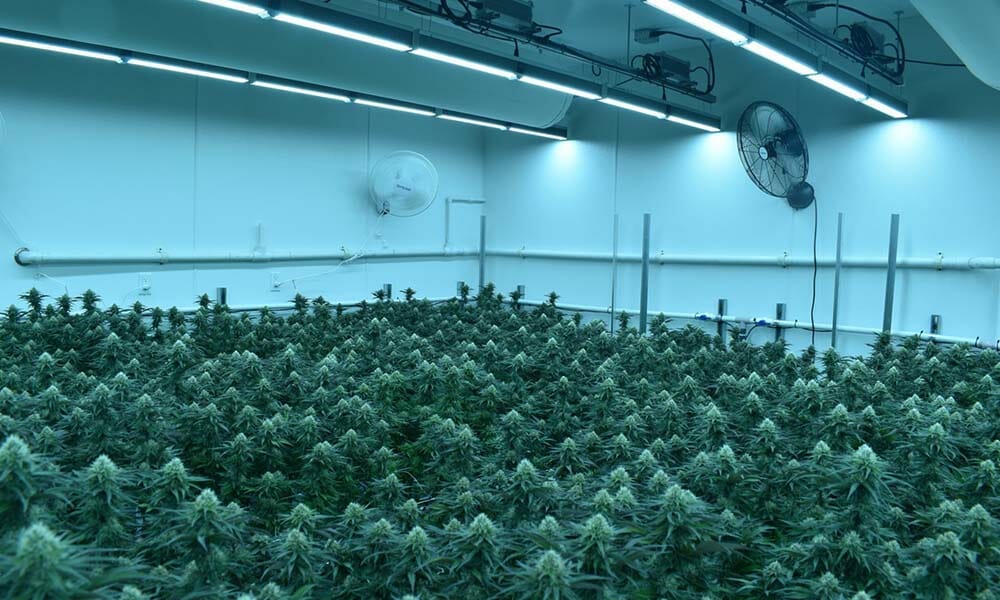
14 Jan High Light Intensity and Cannabis Production
As cultivators strive for crop optimization in pursuit of increasing yields, light intensity has emerged as a primary parameter to meet this goal. Recognizing this, Fluence and its research partners are working to put actual data behind the relationship between light intensity and yield.
Fluence recently conducted two research projects on this topic and presented the results of those studies in a webinar attended by cultivators from around the globe. This webinar summarized the results of their high light intensity trial, a continuation of their spectra research work, read more here.
Light Intensity and Yield
The high light intensity research trial was conducted in collaboration with Texas Original Compassionate Cultivation, a medical cannabis production facility and dispensary in Austin, Texas. Results were presented to webinar attendees by Fluence principal scientist, Dr. Dave Hawley.
The study was conducted at light intensities ranging from 1100 µmol m-2 s-1 µmols to 2100 µmol m-2 s-1 µmols. Three cultivars were used high-THC (Type I), balanced THC and CBS (Type II), and low-THC (Type III) The triple replicate study ensured the highest quality data.
In the previous light spectra study, one of key takeaways was the impact of photobleaching on flower as you add more red light into the spectra. Because of this, the research team designed the experiment using PhysioSpecTM R4 (broad white).
What was discovered? The largest yield increase occurred between 1100 µmol m-2 s-1 and 1500 µmol m-2 s-1 range (Chart 2). With 26% more light there was a yield increase of 27%. Yield continued to climb towards 2100 µmol m-2 s-1 where researched observed a yield peak.
Environmental parameters were closely monitored throughout the experiment. Researchers noticed under the treatments exceeding 1500 µmol m-2 s-1 the management of these parameters becomes far more challenging. The Fluence horticulture services team later commented on how growers should manage these changes in the environment.

Relationship between bud yield and light intensity was linear up to 1500 µmol m-2 s-1
Bud yield peaks around 2100 µmol m-2 s-1
Light qualities with more than 60% red content induced severe photobleaching
Comparing LED to HPS
What happens in the lab is then applied in a commercial facility, taking the learnings from the study, Director of Horticulture Services, Dr. Abhay Thosar presented data from trials that compared LED to HPS and the associated results when increasing LED light intensity.
Specifically, the trial — over two flowering cycles — compared to VYPR at 1500 µmol m-2 s-1 to HPS at 1200 µmol m-2 s-1. Other than the air temperature, environmental parameters remained the same.
The results? Fluence saw, overall, the same increase in yield per increase in intensity as proven by the research trial. With some cultivars, they saw no increases, but in others, there were much higher increases. Additionally, they saw a much greater bud diameter under LED, as compared to HPS.
Dr. Thosar points out, there’s room for further improvement if adjustments to environmental parameters — lighting, temperature, humidity, VPD, CO2, airflow, irrigation, nutrients, for example — are made.
Additionally, even with an increase of 25% in light intensity, the study showed reduced energy usage of 25%.
Wrapping up the webinar, Fluence Horticulture Service Specialist, Taylor Kirk presented information about SPYDR 2h, Fluence’s new high-intensity close proximity light. Intended to hang within 8-10 inches of the canopy, SPYDR 2h is a new solution for high intensity in vertical farms. Growers with high-bay applications can achieve their high light intensity needs with the VYPR Series.
Following the presentation, the Fluence experts took questions from webinar attendees; a sampling follows:
Q: Why are CO2 adjustments so important under high intensity?
A: As more light is applied, it tells plants to work harder and faster. Plants need to be given more inputs and they need to increase that biomass. New findings are coming with every study.
Q: At any point, would you reduce light intensity?
A: Under HPS, at the end of the growing cycle. In these trials, the intensity was not reduced. It depends on the grower’s goals. Light can be used as a stressor. You have to find the right balance between light stress, drought stress, or temperature. Fluence hasn’t explored this and can’t recommend it at this point.
Q: When increasing light intensity, do you see more inconsistency deep within the flower canopy?
A: Increases in cannabinoids have been seen at the top of plants no matter what the light intensity is. Fluence is continuing to look at how to increase cannabinoids in the lower parts of the plant — making a deliberate effort to understand.






